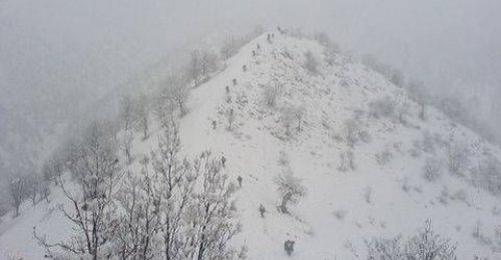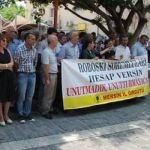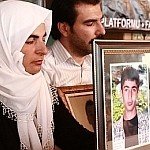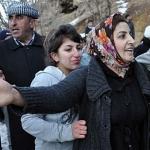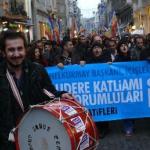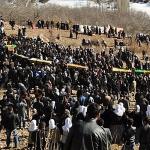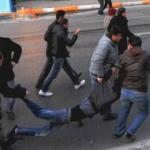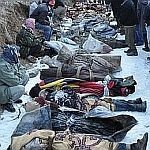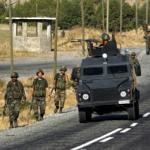Eight non-governmental Turkish organizations carried out a joint investigation into the military operation on Uludere in the pre-dominantly Kurdish region of south-eastern Turkey. 35 civilians died in the course of aerial strikes on 28 December 2011.
The Association of Human Rights and Solidarity for Oppressed Peoples (MAZLUMDER), the Human Rights Association (İHD), the Confederation of Trade Unions of Public Employees (KESK), the Turkish Medical Chamber (TTB), the Association of Contemporary Lawyers (ÇHD), the Turkish Human Rights Foundation (TİHV), the Turkey Peace Parliament (TBM) and the General Workers' Union affiliated to the Confederation of Progressive Trade Unions (DİSK) announced their findings in a joint press release on Tuesday (3 January).
Solely animate beings harmed
The report was entitled "Research Related to the Killing of Inhabitants of the Villages of Gülyazı (Bujeh) and Ortasu (Roboski) / Uludere district (Qıleban) / Şırnak Province - Investigation Report". It revealed findings of the investigation carried out at the scene of incident.
The report drew attention to the fact that exclusively living organisms like human beings, animals and plants were harmed whereas stones, containers or similar substances in the surrounding area were not affected. According to the report, parts of a bomb were found next to a boundary stone. Nevertheless, the stone and a plastic back containing bread and olives right next to the stone remained undamaged. The report furthermore mentioned that diesel fuel containers were scattered all over the place but did not break.
The incident happened directly on the border line between Turkey and Iraq. Thus, the remains of the explosion could be found on either side of the border. In this context it was emphasized that by the time the delegation started their investigation, no procedures to collect evidence had been initiated yet and the scene of incident had not been protected.
Evidence might be concealed
It was stated in the report that no official institution passed into action after the incident to reach the injured and deceased. The villagers had to go to the scene of incident by their own means. This delay caused the death of some persons who lost their lives as the result of blood loss or the cold. The soldiers left the region upon the arrival of the villagers who brought the bodies to the village of Gülyazı themselves, the report stated.
Furthermore, it was revealed that the conditions in hospital were not suitable for conducting autopsies. Evidence obtained as the result of the autopsies was not collected according to official procedures due to the existing conditions. Hence, the report warned that there was the high possibility of concealing evidence.
The delegation also drew attention to the situation of the bodies they saw in hospital. The report described the bodies as partly burned, torn into pieces, most of them with cracked skulls and internal organs visible outside the bodies.
It was pointed out that the impact during the incident was of a very high explosive power and that caustic ammunition had been used.
Radio conversations must be disclosed
The report demanded an investigation into the incident by the Human Rights Commission of the Turkish Parliament, human rights committees of the United Nations and the Council of Europe and national and international civilian and democratic mass organizations.
Some of the issues that need to be clarified as mentioned in the report can be summarized as follows:
* The incident happened close to police outposts and watch towers. Guards and other people informed military units right after the incident. Taking this into consideration it has to be asked why no official or person on duty went to the scene of incident afterwards.
* Subsequent to the incident, ambulances and health personnel came from Şırnak and other places. Why were they not allowed to go to the scene of incident?
* If the pictures taken by the drones gave information about the properties of the carried load due to its shape, it has to be clarified whether there was any information about the load of the group and whether there were any weapons. It also has to be cleared up whether a report was released related to the fact that it was a group of civilians.
* The amount of ammunition and explosives used during the incident has to be determined as well as the target and purpose. It has to be clarified whether illumination flares were used before the incident, whether artillery was used and what kind of bombs was used by the planes.
* Telephone and radio conversations made after the incidents should be disclosed. This includes conversations between the planes and the air force command, village guards, village headmen and the police or third parties. (YY)




